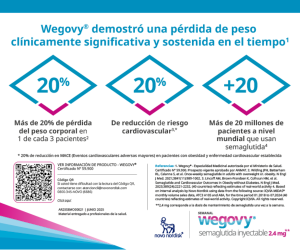Symposium 5: Medication management in diabetes and chronic kidney disease
DOI:
https://doi.org/10.47196/diab.v54i3Sup.296Keywords:
chronic kidney disease, drugsAbstract
Symposium 5: Renal involvement in diabetes: beyond the kidney
Medication management in diabetes and chronic kidney disease
Renal circulation represents 25% of the systolic volume, for which kidneys receive an amount of drug in circulation superior to any other organ. This load could increase in hyperfiltration, but does not decrease in the same proportion as the renal function, increasing the amount of drug per functional nephron during chronic kidney disease (CKD). CKD modifies pharmacodynamics in different ways. Through the alteration of: 1- the composition of the body fluids distribution compartment, 2- the plasma proteins synthesized in an environment which does not eliminate toxics, adding the carbamylation to the glycosylation of diabetes, 3- the environment in which the drug-receptor union takes place, and 4- the systematic metabolic alterations. The decrease of renal depuration increments the hepatic and enzymatic metabolic load, altering the half-life of the drugs and the metabolites.
References
- Matzke GR, Aronoff GR, Atkinson AJ Jr, et al. Drug dosing consideration in patients with acute and chronic kidney disease-a clinical update from Kidney Disease: Improving Global Outcomes (KDIGO). Kidney Int. 2011; 80(11):1122-37.
- Lea-Henry TN, Carland JE, Stocker SL, Sevastos J, Roberts DM. Clinical Pharmacokinetics in Kidney Disease. Fundamental Principles. CJASN 2018;13(7):1085-1095.
- Szummer K, Lundman P, Jacobson SH, et al. Association between statin treatment and outcome in relation to renal function in survivors of myocardial infarction. Kidney Int. 2011;79(9):997-1004.
- Palmer SC, Di Micco L, Razavian M, et al. Effects of antiplatelet therapy on mortality and cardiovascular and bleeding outcomes in persons with chronic kidney disease: a systematic review and meta-analysis. Ann Intern Med 2012;156(6):445-59.
Downloads
Published
Issue
Section
License

This work is licensed under a Creative Commons Attribution-NonCommercial-NoDerivatives 4.0 International License.
Dirección Nacional de Derecho de Autor, Exp. N° 5.333.129. Instituto Nacional de la Propiedad Industrial, Marca «Revista de la Sociedad Argentina de Diabetes - Asociación Civil» N° de concesión 2.605.405 y N° de disposición 1.404/13.
La Revista de la SAD está licenciada bajo Licencia Creative Commons Atribución – No Comercial – Sin Obra Derivada 4.0 Internacional.
Por otra parte, la Revista SAD permite que los autores mantengan los derechos de autor sin restricciones.




























